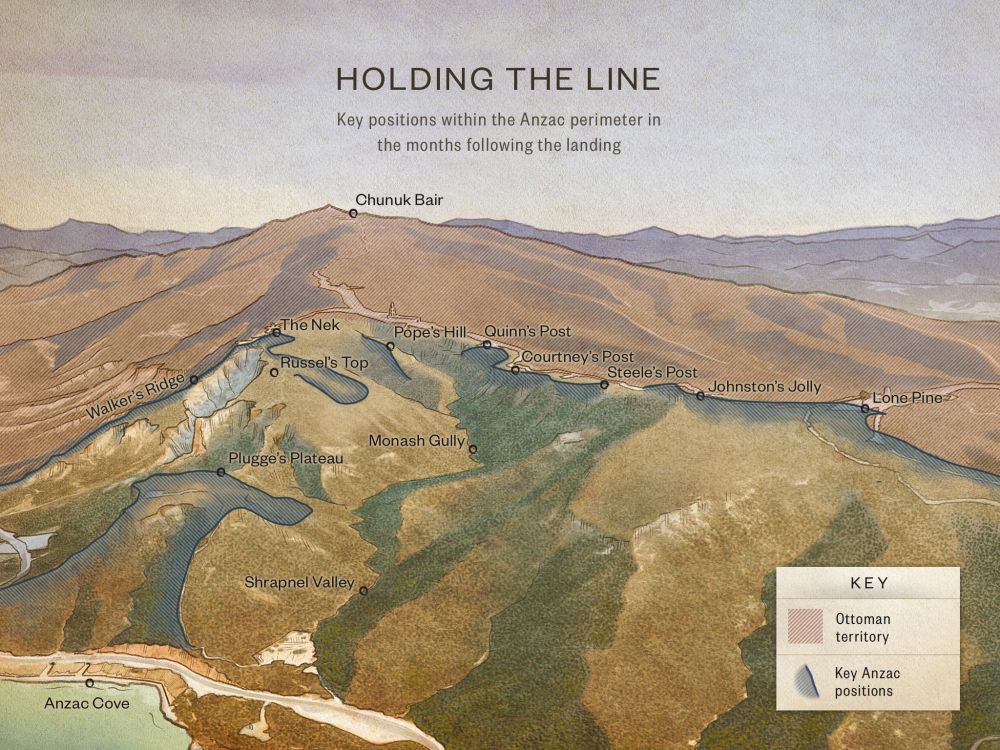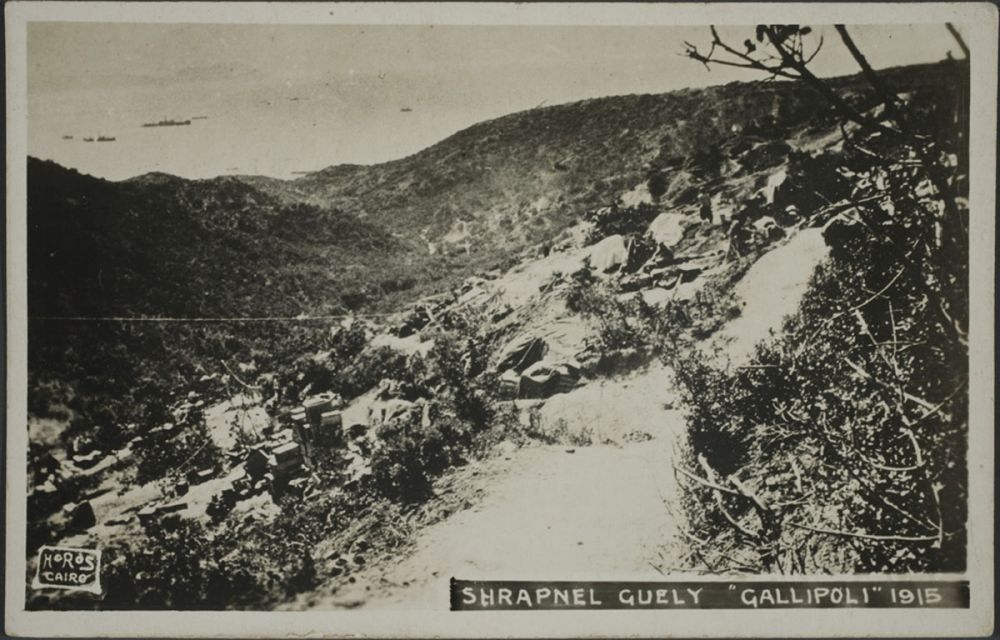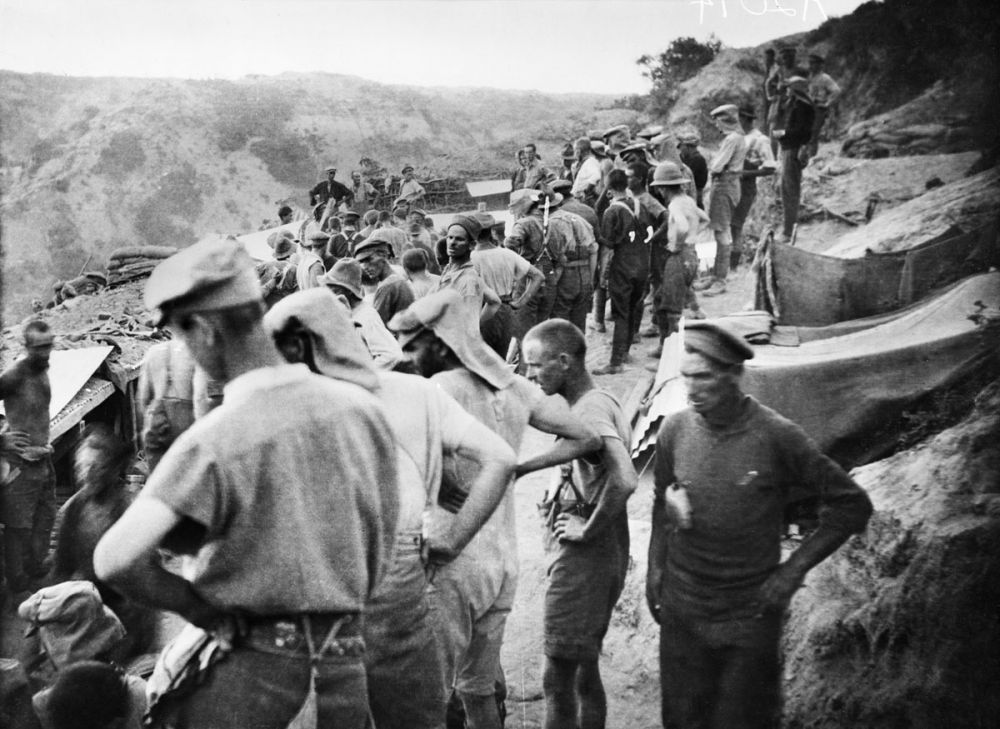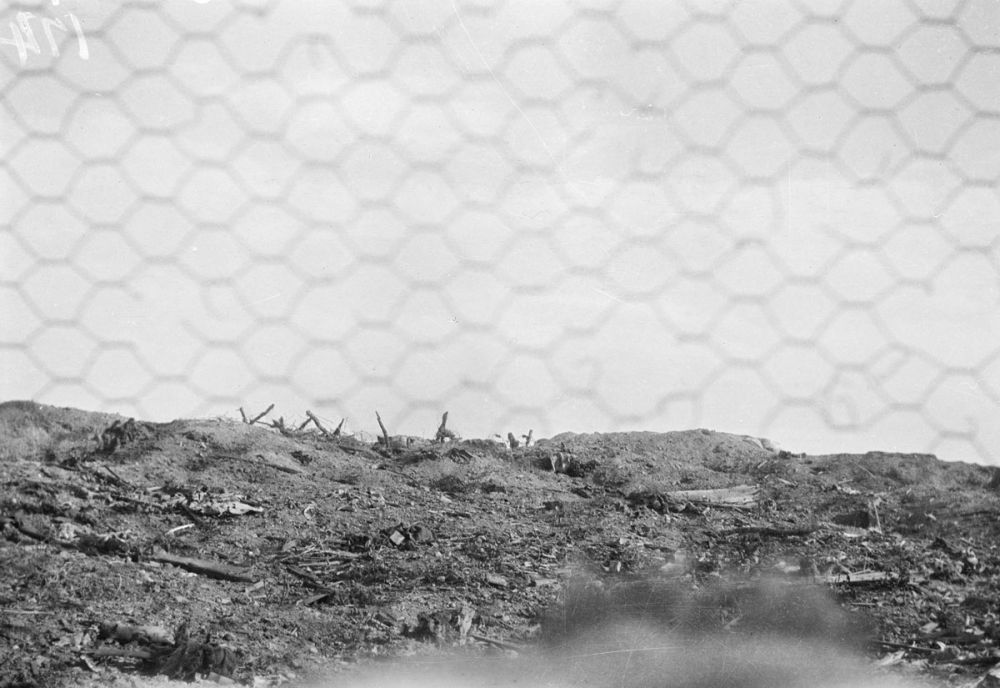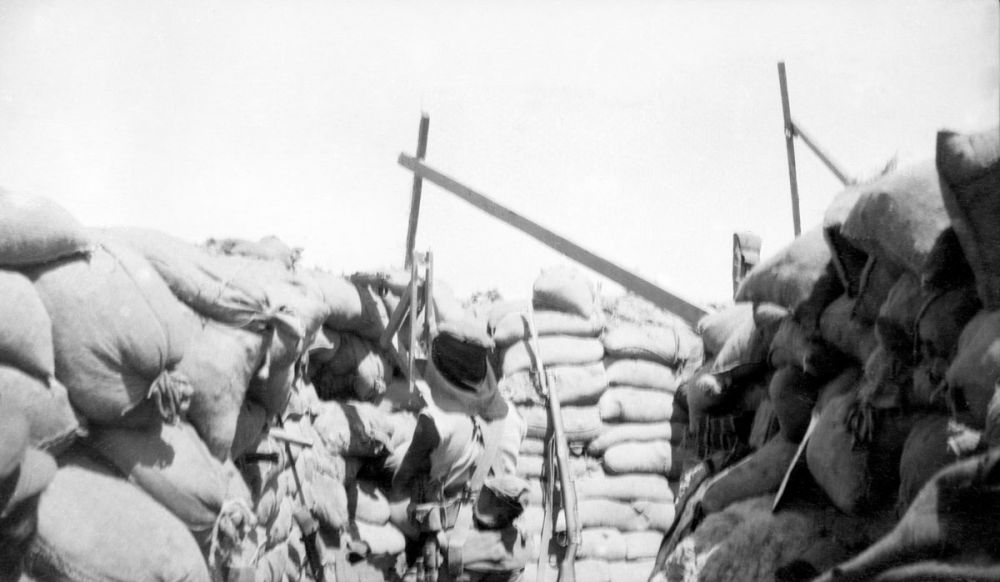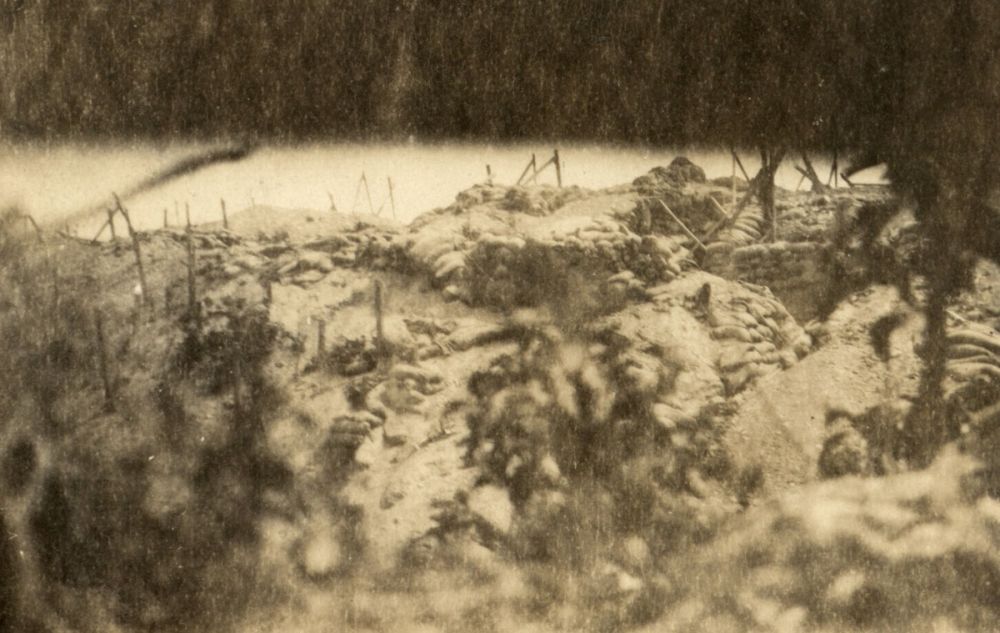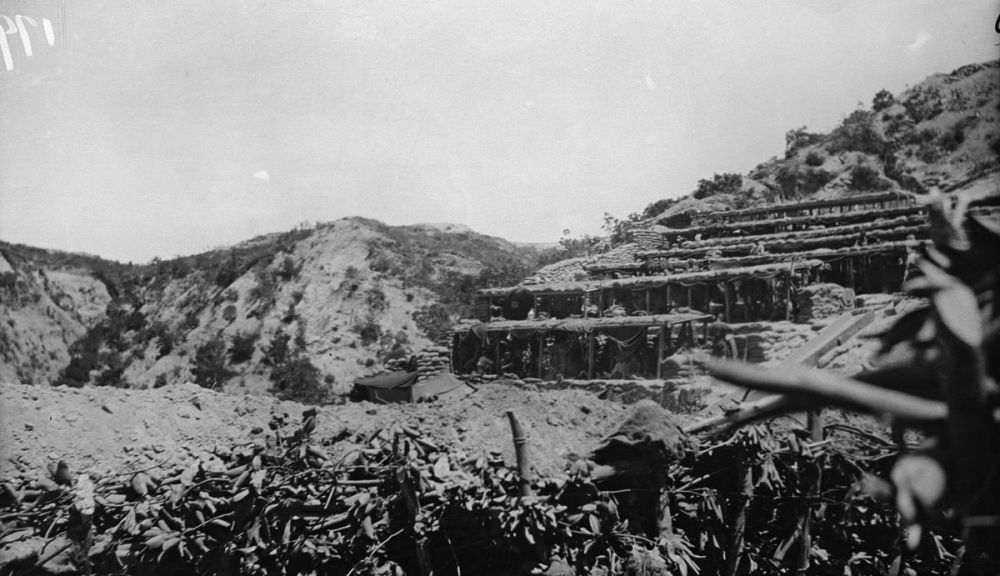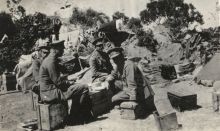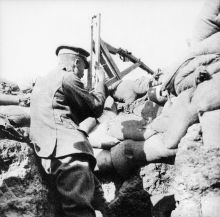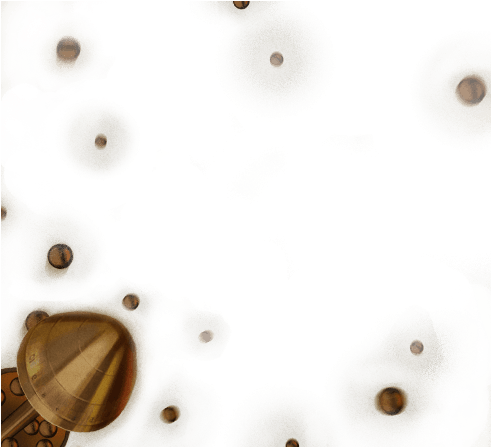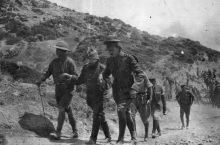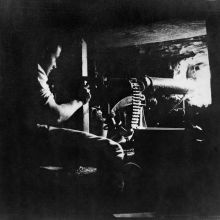Quinn’s Post
During the Gallipoli campaign, most of this cemetery was no-man's-land. Where you are standing is close to the area of the New Zealand frontline trenches. The graves at the far end of the cemetery mark the Ottoman frontline trenches. If you were to look out here at no-man's-land in June 1915, there would be a tangle of barbed wire, chicken wire, burst sandbags and bodies. In fact, there were so many dead men between here and the Turks that maggots fell out of the trench walls.
And often, when soldiers were digging forward towards the enemy, they would have to dig through bodies and seal them off with wood simply to get past. You can imagine the stench and the conditions that men lived with here at Quinn’s Post.
This particular spot was the most hated place at Quinn’s Post because this is where grenades were thrown. The Ottomans had a very good cricket-ball grenade. Until the very end of the campaign, the Anzacs only had a very lousy homemade grenade. These were made from empty jam tins at the beach. They were full of scrap, a bit of explosive, a detonator. Then the soldiers would hope to God that the grenades wouldn’t blow up in their hands as they turfed them into the enemy trench.
At the same time, New Zealand and Australian tunnellers were digging underneath where you stand. The Ottoman tunnellers were digging as well, and there was an underground war going on. In fact, what you’re standing on is a ‘Swiss cheese’ full of tunnels that have been sealed off.
In June 1915, when Quinn’s Post was taken over by the Wellington Infantry Battalion under Lieutenant-Colonel Malone, he transformed it into an impregnable bastion. He put up chicken-wire to stop the grenades bouncing down into the trenches and erected bomb-proof terraces for his men to live in. Malone insisted that every Turkish bullet, every Turkish grenade was met with at least twice the number from his own men. And in the end it was the Turk who feared coming into the line at Quinn’s Post. This became a very impressive stronghold, where both improvisation and professional skill turned it from the most dangerous post into one of the strongest.
When Malone took over Quinn’s Post, he set up a team of crack shots under Lieutenant Hami Grace, a young Māori officer who was part of the Wellington Infantry Battalion. Along with Jimmy Swan – an experienced deer stalker – they dominated. If there was a supply convoy coming up Monash Gully, the New Zealand and Australian snipers got busy and wiped out any Ottoman snipers – and guaranteed control over no-man’s-land.
This was how New Zealand soldiers survived at Quinn’s Post.


